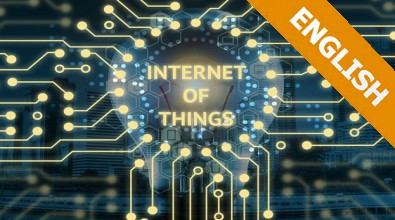Introduction to IoT

Welcome to the course Introduction to Internet of Things
Introduction to Internet of Things (IoT) is an introductory course for students in both Software Engineering and Business Administration, especially when our society has entered the Industrial Revolution 4.0 and none of us could stand outside this trend. It requires each of us to grasp the capabilities, strengths, and advantages of IoT devices in order to contribute to the development, application and building them in all aspects of social life and business.
This 15 hour course provides the following skills and knowledge:
- Understand the capability to apply IoT devices in daily life
- Know how to write and load code, control Arduino board and basic I/O devices
- Build some simple IoT systems such as: control LED blinking, traffic, fire alarm, thermometer and display on 7-segment LED.
These skills would give you a big picture of IoT. After finishing this basic course, if you are a student choosing embedded and IoT systems career path, this is the inspirational and interesting beginning to explain why you should learn more advanced courses such as C programming, computer network, network programming, mobile programming. If you are a Business Administration student, it would also inspire, motivate, be the ice-break showing you that IoT is not such a difficult or too far away thing to be applied in daily life.
Course name:
IoT101 – Introduction to Internet of Things
Estimated duration:
15 hours
Course objectives:
- Inspire and encourage students to be confident in learning and participating in projects related to IoT.
- Know IoT applications in daily life.
- Be able to organize and build simple Arduino controller program using C programming language.
- Be able to program connection to IoT devices such as: fire alarm, thermometer, humidity, ultrasonic sensors, infrared receiver device, red and green LED, 7-segment LED, speaker and honk
- Be able to make an IoT product connecting to fire alarm sensor and thermometer, getting data, handling and controlling simple output such us red and green LED, 7-segment LED and honk.
Course structure:
Lesson 1: Overview of IoT, modern applications, and potential for development
Lesson 2: Introduction to the Arduino circuit board, ports, and pins
Lesson 3: Introduction to electronics and circuits
Lesson 4: Introduction to sensors and other input devices
Lesson 5: Introduction to the programming language C and how to compile and upload it to IoT devices
Lesson 6: Basic programming features in C (loop, branching, function)
Lesson 7: Introduction to output devices that can be directly connected to Arduino
Lesson 8: Introduction to the motor shield module
Lesson 9: Wireless connection for IoT devices (Infra-red, Bluetooth, WiFi)
Resources:
- Arduino
- Arduino - Howto
- Arduino Workshop - A hands-on introduction with 65 projects, by John Boxall, No Starch Press.
Recommended prerequisites:
- Adequate English comprehension skills.
Course designer
|
Bui Ngoc Anh.
|